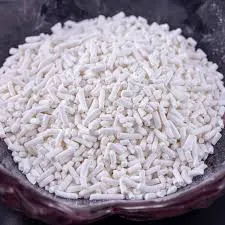
monosodium glutamate products
The Role of Monosodium Glutamate in Food Products
Monosodium glutamate (MSG) has long been a topic of conversation in both culinary and scientific communities. Commonly known for its use as a flavor enhancer, MSG is a sodium salt of glutamic acid, an amino acid that occurs naturally in many foods. While its culinary advantages are often acknowledged, the questions surrounding its safety and health effects continue to spark debate.
Origins and Production of MSG
MSG was first isolated in 1908 by Japanese chemist Kikunae Ikeda, who sought to identify the unique savoriness of seaweed broth. Through his research, he discovered that glutamic acid produced an umami flavor, which is considered one of the five basic tastes alongside sweet, sour, bitter, and salty. The industrial production of MSG typically involves the fermentation of starch, sugar beets, or molasses, resulting in a white crystalline powder easily recognized by chefs and home cooks alike.
Culinary Applications
MSG is most commonly associated with Asian cuisine, particularly in dishes such as stir-fries, soups, and sauces. However, its applications extend far beyond this realm. It is now found in a plethora of processed foods including snack items, seasoning mixes, canned goods, and even frozen meals. The inclusion of MSG in these products elevates flavors by enhancing the umami taste, making them more appealing to consumers.
Food manufacturers are leveraging MSG not only to improve taste but also to reduce sodium levels in their products without sacrificing flavor. Since MSG comprises about one-third of the sodium found in table salt, it provides a viable alternative for those looking to manage their salt intake while still enjoying flavorful meals.
monosodium glutamate products

Health Considerations
Despite its widespread use, MSG has been surrounded by controversy regarding its safety. Some individuals claim to experience symptoms such as headaches, flushing, and sweating after consuming food containing MSG, a phenomenon often referred to as Chinese Restaurant Syndrome. However, extensive scientific research has largely debunked these claims. The U.S. Food and Drug Administration (FDA) has classified MSG as generally recognized as safe (GRAS), and studies have shown that adverse reactions are rare and often occur only in sensitive individuals consuming large quantities.
Furthermore, a comprehensive review by the Joint FAO/WHO Expert Committee on Food Additives concluded that MSG, when consumed in typical amounts, poses no significant health risks for the general population. However, as with many food additives, moderation is key, and individuals should listen to their bodies regarding reactions to certain ingredients.
Cultural Perspective
MSG is often misunderstood as purely an industrial ingredient, but it plays a cultural role in many culinary traditions. In many Asian households, the use of MSG is a testament to cooking skills since it can amplify the natural flavors of ingredients. Moreover, the stigma attached to MSG in Western countries is largely cultural, with a preference for “natural” ingredients often overshadowing the effective culinary benefits it offers.
Conclusion
Monosodium glutamate serves as a vital ingredient in the modern food landscape, enhancing flavors and providing versatility in various dishes. While ongoing discussions about its health implications continue, it is essential to rely on scientific evidence and established guidelines when considering its use. MSG's ability to elevate taste without the added sodium makes it an invaluable tool for both chefs and food manufacturers. As consumers, being informed and skeptical of sensational claims while appreciating the benefits of culinary science can lead to a more flavorful and balanced approach to diet and nutrition.
-
Pure Sodium Dichloroisocyanurate Dihydrate | Powerful DisinfectantNewsAug.29,2025
-
Industrial Chemicals: Quality & Purity for Every IndustryNewsAug.28,2025
-
Nitrile Rubber Honoring Strict Production StandardsNewsAug.22,2025
-
Aspartame Ingredients Honoring Food Safety ValuesNewsAug.22,2025
-
Fertilizer for Balanced Plant NutritionNewsAug.22,2025
-
Cyanide Gold Processing with High Purity AdditivesNewsAug.22,2025
-
Formic Acid in Textile Dyeing ApplicationsNewsAug.22,2025
Hebei Tenger Chemical Technology Co., Ltd. focuses on the chemical industry and is committed to the export service of chemical raw materials.
-

view more DiethanolisopropanolamineIn the ever-growing field of chemical solutions, diethanolisopropanolamine (DEIPA) stands out as a versatile and important compound. Due to its unique chemical structure and properties, DEIPA is of interest to various industries including construction, personal care, and agriculture. -

view more TriisopropanolamineTriisopropanolamine (TIPA) alkanol amine substance, is a kind of alcohol amine compound with amino and alcohol hydroxyl, and because of its molecules contains both amino and hydroxyl. -

view more Tetramethyl Thiuram DisulfideTetramethyl thiuram disulfide, also known as TMTD, is a white to light-yellow powder with a distinct sulfur-like odor. It is soluble in organic solvents such as benzene, acetone, and ethyl acetate, making it highly versatile for use in different formulations. TMTD is known for its excellent vulcanization acceleration properties, which makes it a key ingredient in the production of rubber products. Additionally, it acts as an effective fungicide and bactericide, making it valuable in agricultural applications. Its high purity and stability ensure consistent performance, making it a preferred choice for manufacturers across various industries.





